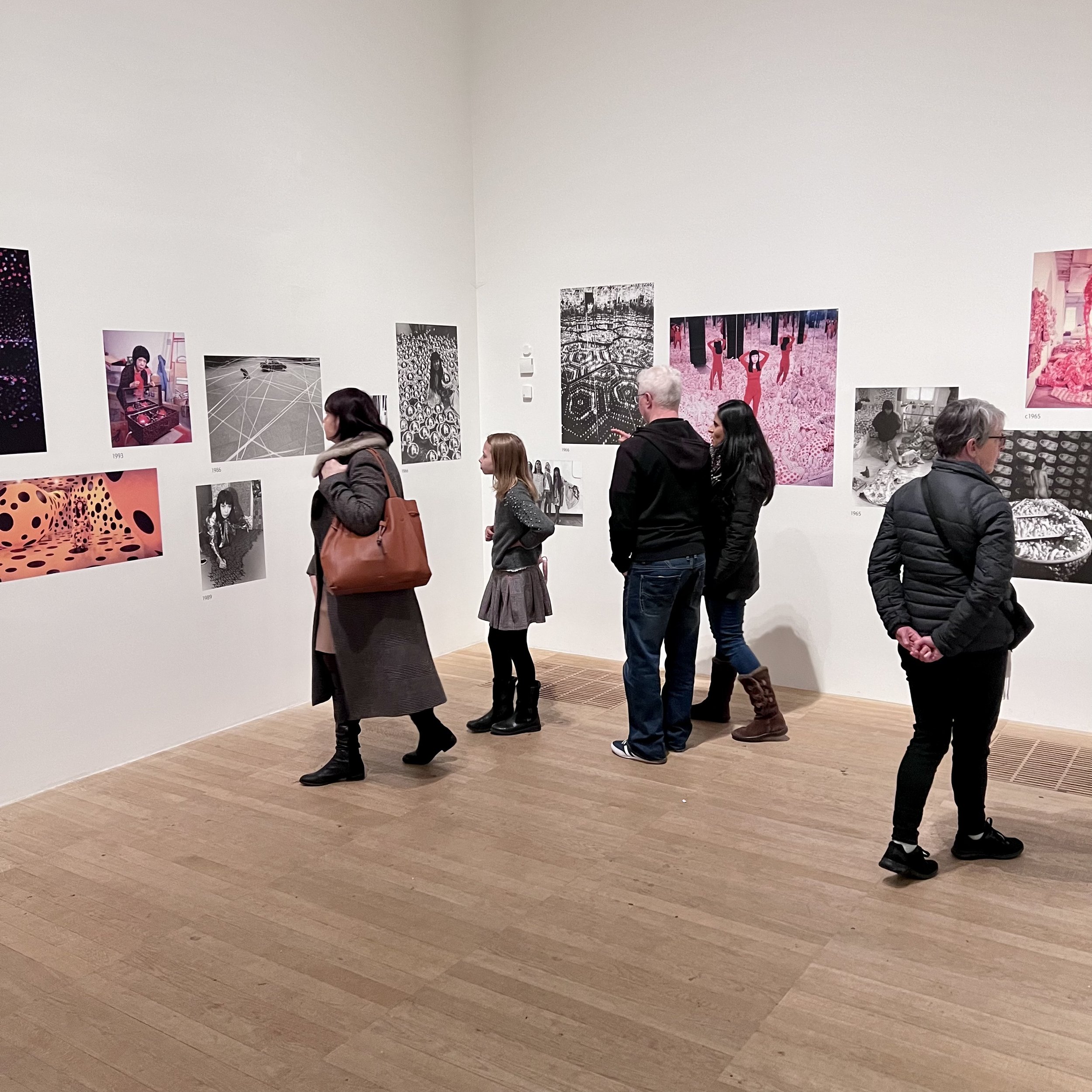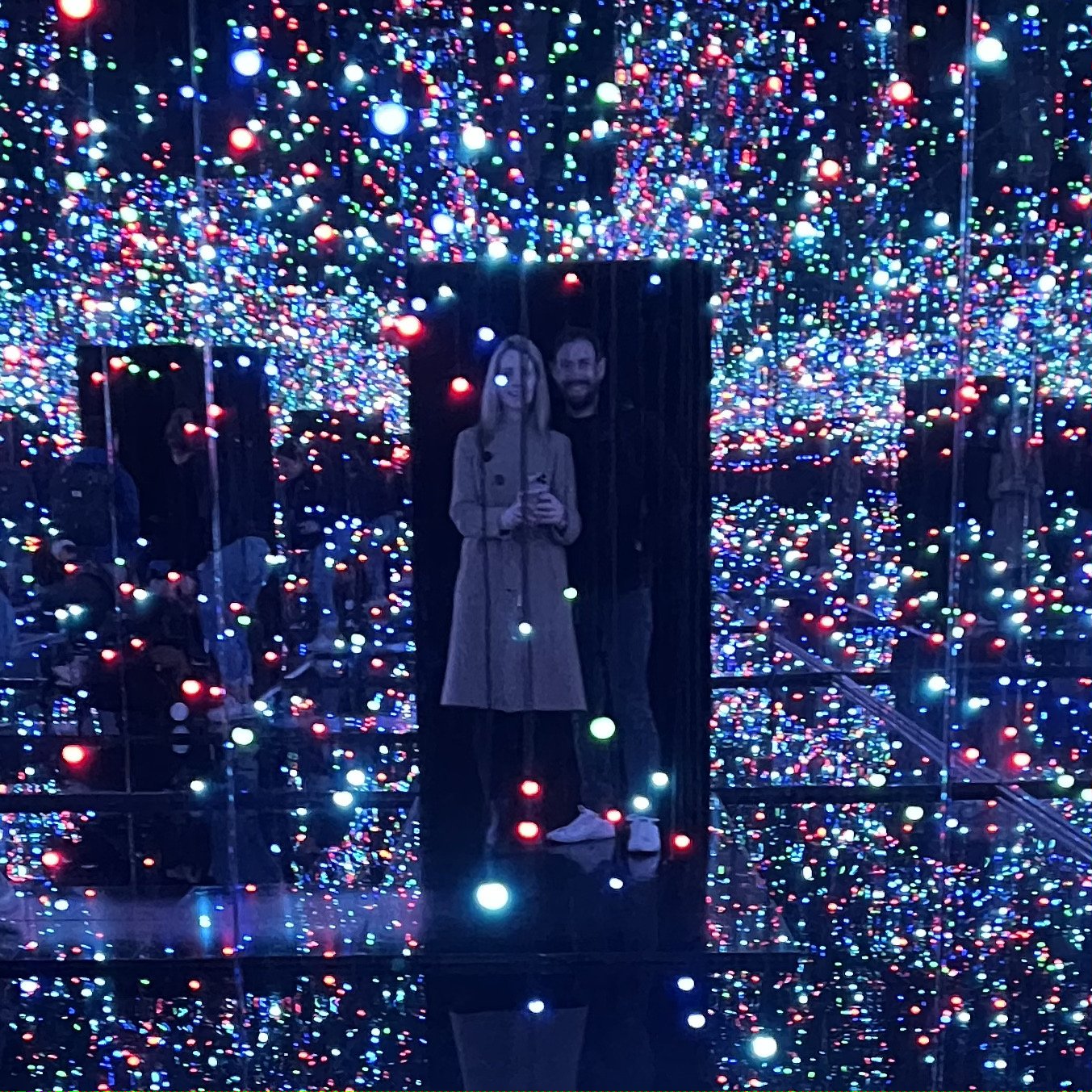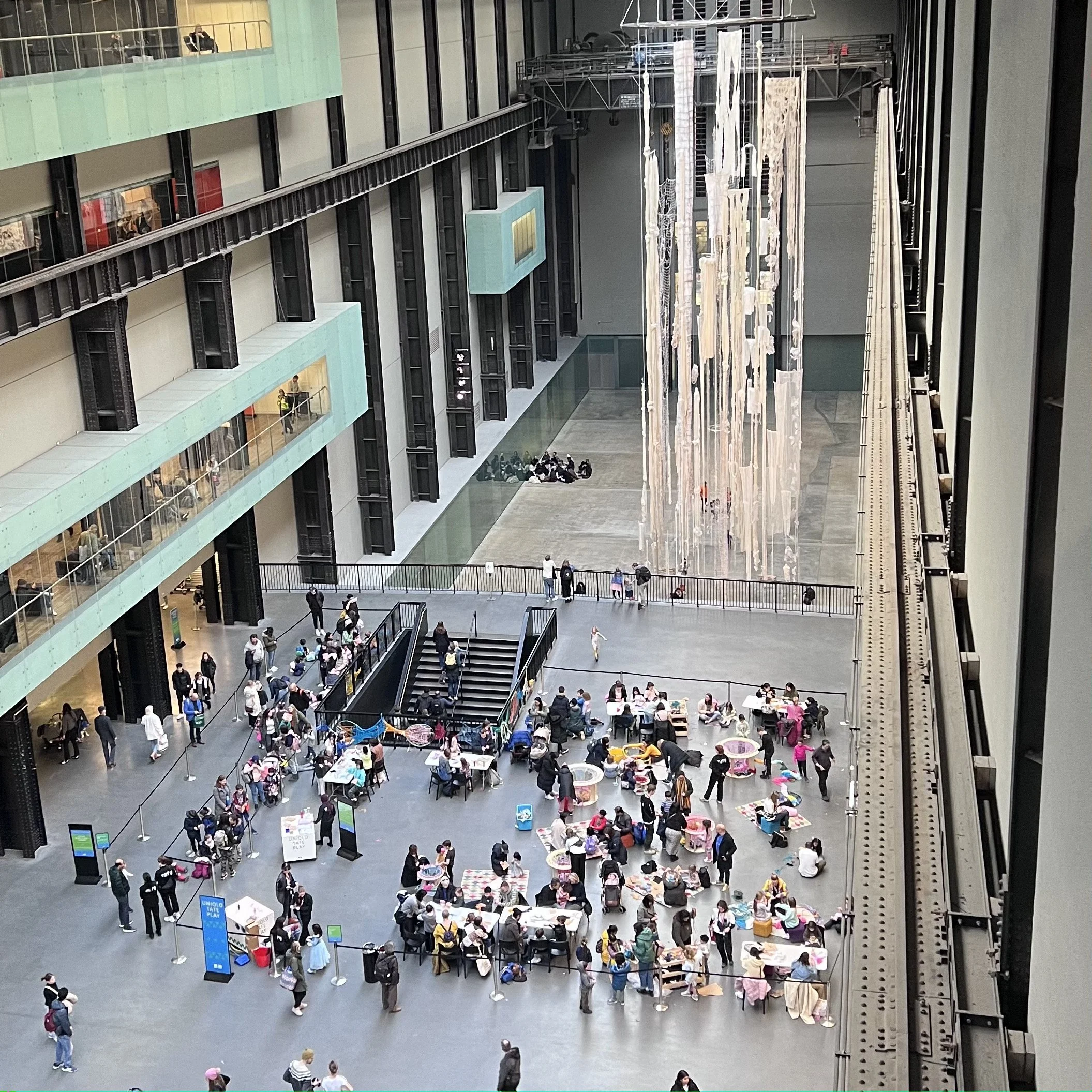More Than Just a Gallery: The Many Roles of the Tate Galleries in the UK Art World
The Tate galleries have a rich cultural history in the UK. They have helped spearhead artisitic innovation over many years and can be considered iconic institutions.
The Tate galleries are more than just ordinary art museums. These galleries are the guardians of some of the most valuable artworks ever created, that have helped shape recent and past British art history. A visit to any Tate gallery guarantees you will discover something new about the country's artistic heritage and its most celebrated artists.
There are currently four Tate galleries in the UK:
Tate Britain - Tate Britain is known for its extensive collection of British art. It has played an important role in promoting and supporting new artistic movements.
Tate Modern - Tate Modern is one of the world's most visited museums of modern and contemporary art. It has been at the forefront of promoting new forms of artistic expression.
Tate Liverpool - Tate Liverpool is located in the historic Albert Dock area and is known for its focus on contemporary art and culture.
Tate St Ives - Tate St Ives is located in the seaside town of St Ives in Cornwall. It has a particular focus on modern and contemporary art from the South West of England.
In this blog post, I will delve deeper into the fascinating role these galleries play in the UK art scene and how they became the iconic institutions they are today.
Table of Contents
A History of the Tate Galleries
The Tate Galleries as Cultural Trailblazers
The Tate Galleries as Masterful Exhibitors
A History of the Tate Galleries
The galleries were first established by Sir Henry Tate, a sugar magnate (Tate & Lyle) and philanthropist who donated his art collection and funds to create a national art institution in the late 19th century. From that point, the name ‘Tate’ became synonymous with art in the UK.
Here is a brief history of the Tate Galleries:
1889: Sir Henry Tate offers to donate his art collection to the British government, on the condition that they build a gallery to house it. The government agrees, and the National Gallery of British Art, (unofficially known as the Tate Gallery), is built in Millbank, London.
1897: The National Gallery of British Art opens to the public with Sir Henry Tate's collection of British art, which includes works by J.M.W. Turner, John Constable, and other British painters.
1917: The National Gallery of British Art acquires its first non-British work, a painting by French Impressionist Pierre-Auguste Renoir.
1932: The National Gallery of British Art is officially renamed the Tate Gallery.
1950s-1960s: The Tate Gallery introduced more modern and contemporary works into its collection, including works by Pablo Picasso, Salvador Dalí, and Jackson Pollock.
1988: Tate Liverpool opens in the city of Liverpool, showcasing modern and contemporary art from the Tate's collection.
1993: Tate St Ives opens on the site of an old gasworks and overlooks Porthmeor beach, showcasing local artists.
2000: Tate Modern opens in the former Bankside Power Station in London, dedicated to contemporary art from around the world. Tate Gallery is renamed Tate Britain to distinguish the two London-based galleries.
2016: Tate Modern opens a new extension, now known as the Blavatnik Building.
2017: Tate St Ives reopens after a major renovation, showcasing art from the St Ives artists' colony in Cornwall, as well as modern and contemporary art.
2023: Tate Liverpool is scheduled to close in October 2023 for two years whilst renovation work takes place. The gallery plans to operate from other locations in the city.
The galleries continue to expand their collections and exhibit a diverse range of art from different cultures and time periods.
The Tate Galleries as Cultural Trailblazers
Back in 1897, the Tate Gallery was founded under the name National Gallery of British Art with one goal - to promote British art to the public. But as time passed and as new venues opened, the Tate galleries expanded their collections and evolved into cultural trailblazers. Here are just a few examples of how they achieved this:
Championing Modern Art: The Tate Modern has championed modern and contemporary art, bringing it into mainstream culture.
Embracing Diversity: The Tate Galleries have made a concerted effort to diversify their collection and represent artists from a variety of backgrounds.
Supporting Emerging Artists: The Tate provides a platform for emerging artists to showcase their work.
The Host of the Turner Prize: The prestigious Turner Prize is held in Tate Britain every two years. Winners of the Turner Prize have included Damien Hirst, Antony Gormley, Rachel Whiteread, Steve McQueen and Grayson Perry amongst many others.
Expanding Access: The Tate Galleries have made a concerted effort to expand access to art for all. They offer free admission to their permanent collections and have launched a variety of initiatives to engage audiences from all walks of life, including family-friendly events and accessible programming for disabled visitors.
The Tate Galleries as Masterful Exhibitors
The Tate galleries have an art collection that stretches back five centuries, from the Renaissance to contemporary art. These collections include some of history's most famous artists such as J.M.W. Turner and Francis Bacon. It’s possible to make multiple trips to these galleries and still not see everything because the collection is so large and diverse.
The Tate galleries are also well-known throughout the art world for their ground-breaking exhibitions that push boundaries and set new standards. They are not afraid to take risks and cause controversy.
I have listed some of the key exhibitions that the Tate galleries have held over the years. Each one has had a profound effect on the way we view our place in society.
Tate Britain:
"Queer British Art: 1861-1967" (2017) - this exhibition was the first of its kind, exploring the relationship between homosexual identity and art in Britain.
"William Blake" (2019-2020): This exhibition was the largest survey of William Blake's work in the UK in over 20 years and showcased his innovative approach to art, which included combining poetry and images in a single work.
“The Rossettis” (2023): This exhibition follows the romance and radicalism of the Rossetti generation, during and beyond the Pre-Raphaelite years.
Tate Modern:
"Soul of a Nation: Art in the Age of Black Power" (2017) - this exhibition brought together works by black artists in the US during the Civil Rights Movement.
"The EY Exhibition: Picasso 1932 - Love, Fame, Tragedy" (2018) - this exhibition was the first to focus solely on a single year in Picasso's career, exploring the artist's personal life and the political context of the time.
"Olafur Eliasson: In Real Life" (2020): This exhibition showcased the work of Danish-Icelandic artist Olafur Eliasson, who creates immersive installations that engage with the environment and the senses.
“Yayoi Kusama: Infinity Mirror Rooms” (2023) These immersive installations provide an insight into Kusama’s unique vision of endless reflections.
I have written other articles that feature Tate Modern, which can be read here.
Tate Liverpool:
"Gustav Klimt: Painting, Design and Modern Life in Vienna 1900" (2008) - this exhibition explored the work of Klimt and his contemporaries in Vienna at the turn of the 20th century.
“Op Art in Focus” (2017) - This exhibition showcased the work of Optical Art, also known as Op Art, which is an art movement that emerged in the 1960s. The exhibition displayed a range of works by artists such as Bridget Riley, Victor Vasarely, and Jesus Rafael Soto, and explored the use of optical illusions, geometric shapes, and bright colours in their art.
“Life in Motion: Egon Schiele/Francesca Woodman” (2018) - This exhibition brought together the works of two artists from different time periods and styles: Austrian painter Egon Schiele and American photographer Francesca Woodman. The exhibition showcased their artworks side by side, highlighting the similarities and differences in their approach to the human form and the body in motion.
Tate St Ives:
"Modern Art and St Ives" (2016) - this exhibition explored the influence of St Ives on modern art in Britain, showcasing works by artists who lived and worked in the area.
"Virginia Woolf: An Exhibition Inspired by Her Writings" (2018) - this exhibition brought together contemporary art and writing inspired by the work of Virginia Woolf.
"Haegue Yang: Strange Attractors" (2021): This exhibition showcased the work of Korean artist Haegue Yang, who creates immersive installations that combine traditional craft techniques with modern technology.
"Barbara Hepworth: Art & Life (2023): This exhibition showcased the work of British artist Barbara Hepworth, who was a pioneer of modern sculpture and developed innovative techniques for working with materials such as marble and bronze.
The Tate Galleries as Champions of Art Education
The Tate galleries are not just about displaying art; a priority is to make art accessible to as many people as possible. Their innovative programs cater to a wide range of audiences, from workshops to tours and other interactive experiences.
The Tate galleries have some incredible initiatives, and here are some examples of how the Tate Galleries have championed art education over the years:
The Tate Schools and Teachers Program provides free resources, workshops, and events for teachers and students, assisting in the integration of art into the curriculum and making it more accessible to young people.
Tate Exchange is a space within Tate Modern that invites artists, researchers, and the general public to collaborate on projects and explore new ideas.
Artist Rooms: Artist Rooms is a collection of contemporary art that is on loan to galleries and museums throughout the United Kingdom. The collection, which includes pieces by Andy Warhol and Louise Bourgeois, is frequently used in educational programmes and workshops.
The Tate Collective is a group of young people aged 16 to 25 who are enthusiastic about art and culture. The programme allows members to participate in Tate activities and events while also developing their skills and knowledge of the art world.
My Final Thoughts on the Tate Galleries
It really feels like the original intention of Sir Henry Tate to ‘promote British art to the public’ is still at the centre of what the Tate galleries represent in the present day. They have been able to move with the times, never shying away from creating innovative exhibitions and diverse education programmes. The Tate galleries have truly played a pivotal role in transforming the British art scene.
Whether you're exploring the rich history of British art in the Tate Britain, experiencing the latest contemporary art at the Tate Modern, or engaging in critical dialogue through the Tate Exchange program, the Tate galleries provide a platform for creativity, innovation, and community engagement.









